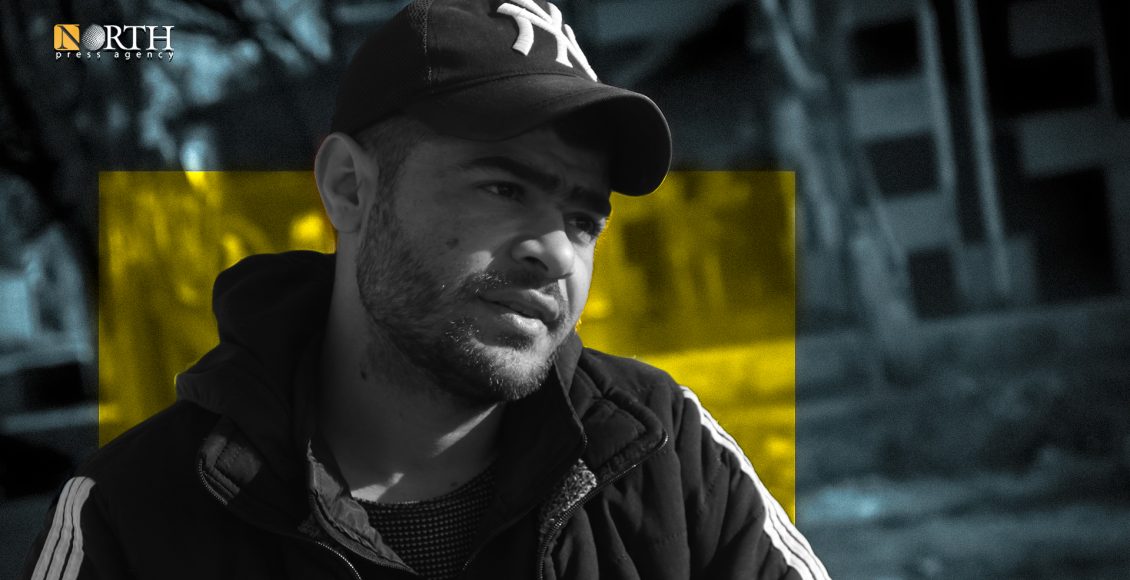Survivor shares harrowing story in Syria’s human slaughterhouse
By Dilsoz Youssef
HASAKAH, Syria (North Press) – Just moments after receiving $100 via a transfer sent by a friend he had worked with before leaving Syria through a company in Qatar, Abdullah was surrounded by a security patrol of the former Syrian regime in central Damascus, four years ago.
In mid-2020, Abdullah Khalil, 25, was arrested by Branch 215 on charges of “financing terrorism” for receiving a financial transfer from a “hostile” foreign country, according to accusations made by an investigating officer with the rank of major named “Ali.”
Despite Khalil denying the charges, he was later forced to incriminate himself under torture and severe beatings. He remained imprisoned in the branch for six months before being transferred to the notorious Saydnaya prison. Before the transfer, he was coerced into signing documents without knowing their contents, he said.
Khalil had been living in Damascus for five years before his arrest, working in restaurants alongside his studies.
Khalil, who spent more than four years in the former regime’s prisons, including over three years in Saydnaya, recounts the most terrifying experience of his life to North Press.
Prisoner No. 86
In the village of Tel Massas in the countryside of Hasakah in northeastern Syria, where his displaced family sought refuge after Turkish forces and affiliated armed factions, aka the Syrian National Army (SNA), seized their home in the city of Sere Kaniye (Ras al-Ain) in late 2019, Khalil continues to live with the haunting memories of imprisonment.
Sitting on a chair in the courtyard of his home under the sunlight, he says he is still afraid to go out alone at night, and has nightmares.
After a moment of reflection, Khalil recalls his arrival at Saydnaya, the scars of torture still marking his body.
He says it was 11:00 AM when they arrived at Saydnaya prison with 33 civilians and eight detained soldiers, all shackled with a single iron chain.
He adds that 19 other detainees accused of “terrorism” were transported in a single chain to the “Red Prison,” infamous among Syrians for its brutality.
As they entered the prison hall, the officer ordered them to strip and lie on the ground, where they were beaten 13 times with sticks. The officer hurled verbal insults and accusations of terrorism and destroying the country.
After the beatings, prison officers replaced their names with numbers. Abdullah Khalil became “Prisoner No. 86.” The same applied to all prisoners. Inside the prison, if someone was called by their number and did not respond, it meant they had sentenced themselves to death.
They tortured prisoners within earshot to make us tremble with fear, Khalil noted, adding that Saydnaya prison is truly a human slaughterhouse.
Established in the 1980s, Saydnaya prison was described by Amnesty International as a “human slaughterhouse,” where the Syrian state silently massacred its people.
Khalil shared a 2-by-2-meter cell with 38 other prisoners. They slept in a sword-like position (on our sides) on filthy, lice-infested blankets spread on the cold ground, taking turns to fit in the space, he says.
Torture methods
During his years in detention, Khalil describes the sadistic methods of torture employed by the guards, each with its own name.
He recalls experiencing the “front teshbih,” where iron cuffs were placed on his wrists, and he was suspended from the ceiling standing only on his big toe.
There was also the “back teshbih,” in which the detainee’s arms were pulled backward and suspended from the ceiling, leaving the entire body’s weight on the shoulders, often dislocating them within an hour or two.
Another method, the “flying carpet,” involved stretching the detainee on a flat board while guards beat him and doused him with water. Khalil describes it as “worse than being shot.”
In addition to physical torture, detainees were subjected to psychological warfare and starvation. “Once, out of extreme hunger, I stole two pieces of bread and was placed in solitary confinement for three days, stripped of clothing in a one-meter by half-meter cell,” Khalil says.
“I had to fold my legs to sleep. I could not see or identify the food I was given. After being released from solitary, I faced further punishment—hanging, insults, and beatings—without being allowed to lift my head.”
Prisoners were sometimes further punished by being placed in the “tire,” a position in which they were bent into a wheel shape and beaten dozens of times with sticks.
Five days before their release, Khalil recounts, “33 people were taken for execution from the security wing, dressed in red uniforms. We do not know where their bodies were taken.”
Prison conditions
Khalil says Saydnaya prison was freezing in winter and stiflingly hot in summer. “Many detainees died because their bodies could not resist the widespread diseases in the prison.”
Regarding food, he says, “Every day, we were given 4–5 olives in the morning, a handful of rice or boiled bulgur without salt for lunch, and half a spoon of labneh, halva, or a bit of water with thyme over bread crumbs for dinner.”
Ironically, Khalil says he often prayed no one from his family would visit him. “Any detainee whose family tried to visit or search for him would disappear. They were executed immediately.”
Liberation
Recalling his release, Khalil says, “On the day we were freed, two hours before, the inspector came, cursed us, and ordered us to sleep. Suddenly, we heard the loud sound of a helicopter. Two hours later, there was complete silence.”
“Ten minutes later, civilians entered the prison and told us, ‘You’re free.’ We could not believe the fall of Bashar al-Assad’s regime. We thought people had stormed the prison to free their relatives.”
Khalil and the other detainees fled quickly, not knowing their destination. Upon reaching Damascus, Khalil stayed at the Umayyad Mosque for three days until his family found him and took him home.
After years of wrongful imprisonment, Khalil, like other detainees, demands justice from the former regime.

